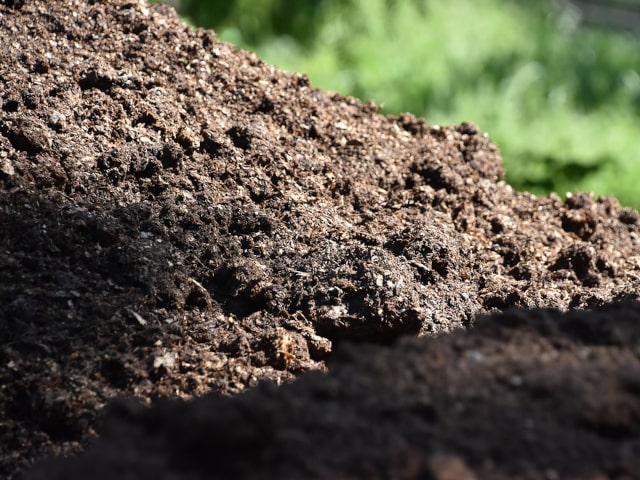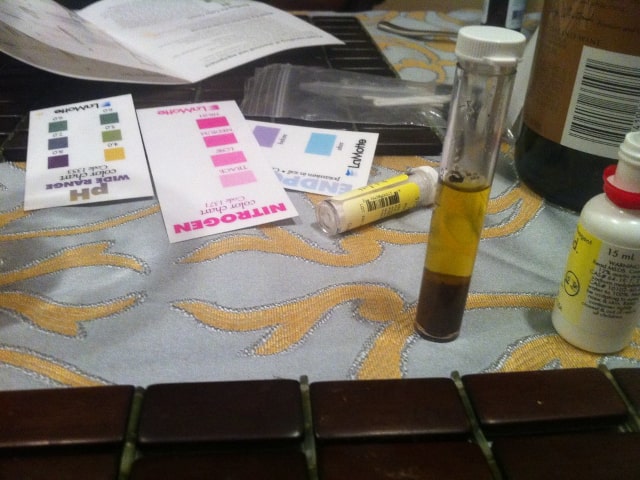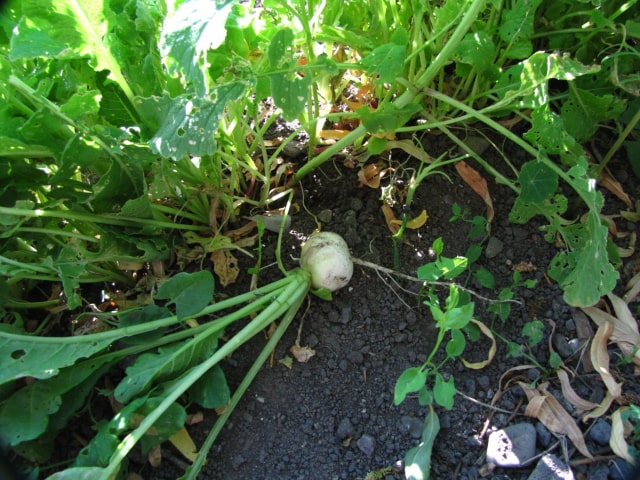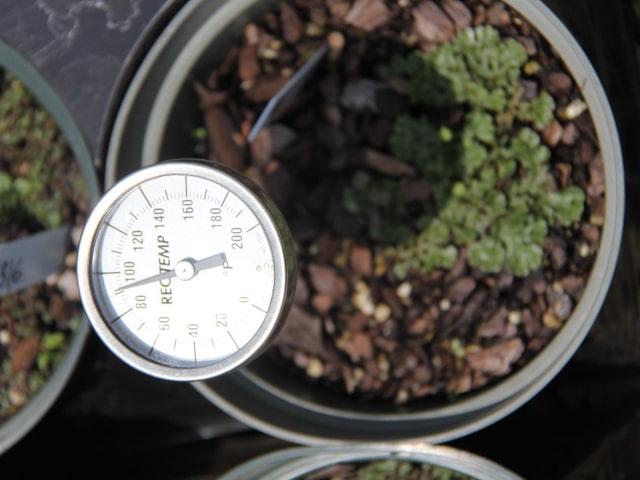Potting Soil, Potting Mix and Potting Amendments Explained
Compost & Soil Last Updated On 05/24/2023
Potting and re-potting is something all plant growers and gardeners need to do from time to time. One of the most vital element needed for potting is soil. You'll often hear people talking about "potting soil" and "potting mix". There are many different terms used, often with different meanings.
Once upon a time, it was very simple: gardeners were required to make their own soil. Usually, it was down to what was available on the ground. All gardeners did was to enrich the soil with compost or animal manure or maybe break it up with sand or gravel. However, the options were limited and basic. On the other hand, it allowed people to know exactly what type of soil they use for growing their plants.
Today, it's not that simple. Go to any garden center and you will find many different soil choices and options, not to mention many amendments and additives to choose from. There are also "exotic" things offered, such as biosolids, polymer crystals or soilless growing medium. It may even seem ridiculous at first: why would you want to buy garden soil in a bag? Isn't that what you have in your garden already, available for free? Obviously, it's not that simple, so this is why it's important to understand various types of garden soil available so you can choose the best one for your plants.
Some of the basic questions you might want to ask:
Is there a difference between potting soil and soil amendments?
Basically, soil is dirt. A soil amendment is anything you add to it to improve it. You will sometimes hear about "soil conditioners", too: they are the same as amendments, but there are so many different blends and mixes on the markets so certain brands use the term "soil conditioner" to make it seem more exclusive.
Is it possible to grow plants in a soilless mix?
Yes, it is. Soilless mix is sometimes used. It's important to know that soil weights down mixes so a soilless mix is very lightweight. It's also easy to sterilize. This is a great combination for seeds and some tricky container plants.
Is there a difference between a mulch and a soil amendment?
The main difference is where it's applied. If you want to use something as a soil amendment, you have to put it at least a few inches into the soil. Mulch, on the other hand, is spread on top of the soil in order to preserve the moisture and keep weeds away. There is some confusion over this because some elements and materials are often used as both mulch and amendment. For example, compost and finely chopped or rotted leaves can be worked directly into the soil to serve as an amendment, or they can be spread on top to serve as mulch. It's similar with bark dust. One word of caution: you shouldn't work any fresh organic material directly into the soil because it will rob nitrogen from soil in the process of breaking down. You can, however, add these materials to the compost pile to break down before you use them.
Choosing the Best Soil Mix
Like you can see, there are many different soil mix options you can use. Sometimes, it's difficult to choose the right product. It's important to understand that creative marketing teams usually come up with all sorts of names for amendments and soils in bags. Therefore, the situation may seem more complicated than it truly is. Also, actual content in the bag can vary depending on the company. This is why it's important to always read the label and ask sales assistants to help you make the purchase.
When shopping for bags of soil, potting mix, conditioners and amendments, here are a few things to keep in mind:
Pay attention to details
There are different labeling laws for garden products and they vary by state. The more specific a manufacturer is about what's inside, the better. Chances are that this product is worth buying. On the other hand, if there's very little info on what's in the bag, it is a warning sign for you to pay attention.
Look for volume, not weight
When it comes to potting soil, mixes and amendments, weight is not a sign of quality. In fact, the opposite is often true. Heaviness can come from dark, low-quality peat, water or sand. Heavy bag is often a sign of poor quality than great value product. It's usually better to go for larger, but lighter bags.
Key words
There are some words that can signal better quality mixes, such as "professional" or "premium". This isn't a rule or an assurance of quality but they can be a good guideline on which products to choose.
Understand potting mixes
Potting mixes often include fertilizers and special moisture-retaining additives. Keep in mind that fertilizer added to the potting mix is usually the short-term one so it's not like you won't have to fertilize your plants. Water-retaining crystals such as hydrogels or polymer crystals will help the mix retain moisture so you won't have to water that often. However, this is still unconfirmed and you will have to water your plants regularly.
Feel the Mix
It's not unusual for a bag to break open, so use it to touch and feel the potting mix you are interested in. It's best to feel the quality under your fingers.
Stick to what works for you
Once you find a good product or a brand you like, stick to it. Don't experiment unless you have to. Save yourself the surprise and stay with your favorites. This will save you time and money in the long run because you will always know how the product works and you will know that it's a good one for your plants.
Popular Soil Amendments
Here is a list of popular soil amendments you'll find packed in smaller bags. Some of them can double as fertilizer and some of them can alter the soil's pH. Smaller size of the bag means that you should add them in smaller proportions. It's important to read labels carefully before adding them to your mix.
It's made of finely ground, steamed animal bones. This material is very rich in phosphorous. It is very popular as a fertilizer for bulbs. However, special bulb fertilizers are more effective. Bonemeal can slightly improve soil texture. You can work it into planting holes or simply sprinkle it on the soil surface and rake in. It may attract animals.
BloodmealIt's made of dried animal blood. This material is a very rich organic source of nitrogen. It will improve soil texture slightly. Like bonemeal, it may attract animals. You should sprinkle it lightly on the soil surface. Another way to apply it is to follow package directions and rake in.
GypsumThis material will break up some clay soils. However, its effectiveness is limited. You should spread it on the soil surface and after that, dig in to a depth of several inches.
LimeThis material is made of ground limestone and it's made to raise soil pH. You should apply it only on acid soils to use it on plants that need more alkaline conditions. Don't apply it automatically every spring. It takes a few weeks to take effect when it comes to processed lime. Dolomite, on the other hand, takes a few months to take effect.
SulfurThis element is made to lowers the pH of the soil. It can therefore make neutral and alkaline soils suitable for acid-loving plants (for example, azaleas and hydrangeas). As with lime, you should use it only if you know your soil's pH.
VermiculiteMade of bits of the mineral mica, popped under high heat. This material can hold water like a hard sponge. It's very common in various potting mixes. This is a great addition to both clay and sandy soils since it loosens the soil and helps it hold water. You should work it into the soil before adding to the container or into the top several inches of the soil. Because of environmental concerns, it's a bit difficult to be found in many garden centers.
PerliteThis material is made of small, heat-popped volcanic rock. It is made to hold water on the outside of the tiny rock. It's usually used like vermiculite. This is an ideal medium for starting cuttings because it doesn't allow them to get overly wet.
Photo credit: msscacti




1 Comments
Hi, I'm wondering what would be the best and yet economical amendments for hard clay alkaline soil. I don't want to make my own compost.
Also, if you were going to add 3 things to a potting soil such as Miracle Grow, what would those be. My pot plants dry out so bad here in Tx in the summer even in the shade. Also my pot plants live, if the heat doesn't get them, but they don't grow. Thank you, Yvonne